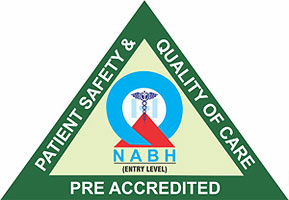+91-7291089674 (Bandra)
+91-7291092120 (Kandivali)





April 30, 2019 | Author: Admin
The use of certain antihypertensive medications and beta-blockers was associated with an increased incidence of certain types of cataract and cataract surgery, according to results of a long-term study recently published in the British journal of Ophthalmology. While other studies in the past had produced inconsistent results, the current study examined the association over a period of 10 years and in a large cohort.
The cohort consisted of 1, 952 participants who made it to the 10-year point. They were all members of the Blue Mountains Eye Study (BMES) population, which consisted of people aged 49 years and older form a region west of Sydney in Australia. The medications studied included calcium-channel blockers, diuretics (loop, thiazide, and potassium-sparing), ACE inhibitors, and beta-blockers.
To provide a statistically sound determination of the association between these medications and risk of cataract, factors that could influence the results were adjusted for. These were age, sex, smoker status, pressure, myopia, steroid use, and socioeconomic status.
The results showed that oral and topical beta-blockers were associated with an increased risk of nuclear cataracts and cataract surgery. For the increased probability of having cataract surgery with topical beta -blockers the odds ratio was 3.09 (CI 1.60 to 5.95) in a multivariate model. Oral beta-blockers showed a similar increased risk (OR 1.45, CI 0.87 to 2.15) and topical beta-blockers (OR 2.12, CI 0.87 to 5.16) with nuclear cataract was also found. With the exception of a possible association between ACE inhibitors and cataract surgery, none of the other classes of antihypertensive demonstrated such a relationship.
Mechanisms that could account for the increased risk of cataract with use of beta-blockers include a direct effect on the lens. Such an effect could involve modification of lens proteins or increased mitotic activity in the lens. As to the question whether the findings of the study will affect future IOP lowering treatments, the researchers suggested that their results be interpreted with caution due to the limitations and potential biases of the study, thus warranting the need for further research. "The biological plausibility for an association between beta-blocker use and cataract, and the internal consistency of this finding for use of both oral and topical beta-blockers, warrants further study." the authors wrote.
Commenting on the findings, Dr. Ivan Goldberg, president of the SEAGIG committee and Clinical Associate Professor at the University of Sydney, who was not involved with the current study, commented in an email interview with World Report, "EMGTS [Early Manifest Glaucoma Treatment Study] showed a clear link between topical medications for glaucoma (mostly betaxolo with some latanoprost) and nuclear sclerotic cataracts, so these results from the BMES are not entirely surprising." He added, "One should remain open-minded about this finding though, because the odds ratios were not overwhelming, and the confidence interval was large."
When asked whether this will have an influence on clinicians, Dr. Goldberg did not think so. “It does serve to remind us, though, that cataract formation could well be accelerated by topical and systemic medications."